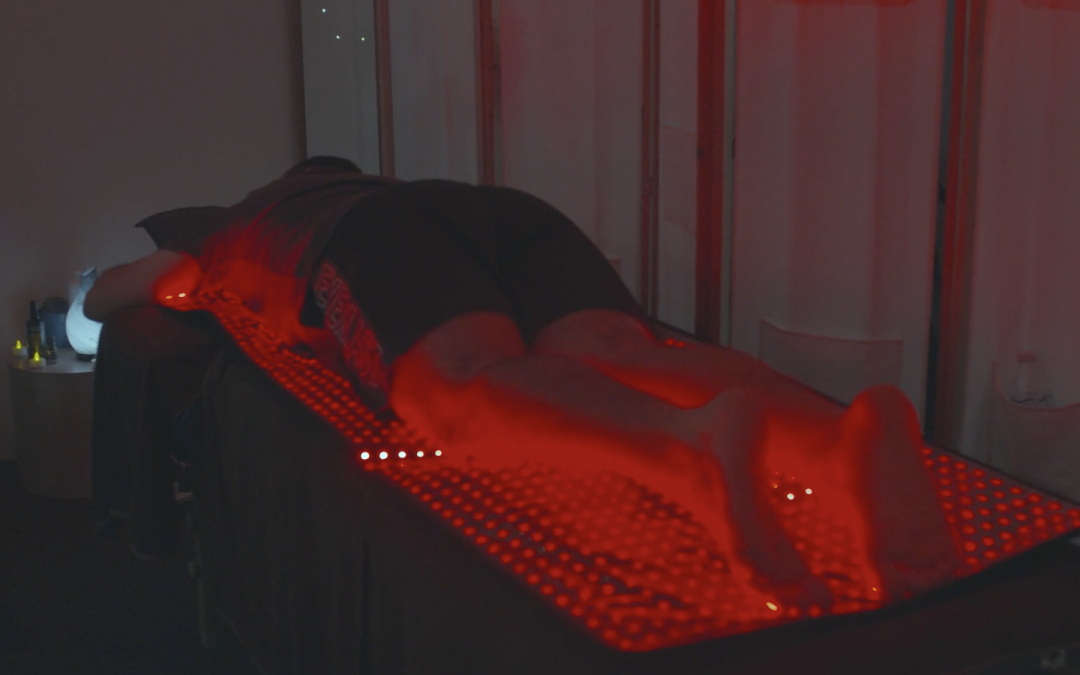Red light therapy (RLT), also known as low-level laser therapy (LLLT) or photobiomodulation, is a treatment that uses red low-level wavelengths of light to treat a range of conditions. It involves exposing the skin to low levels of red or near-infrared light. The light is absorbed by the skin and cells, which can then trigger a range of beneficial biological processes.
How Red Light Therapy Works
RLT works by emitting red light at a wavelength between 600 and 650 nanometers, or near-infrared light at a wavelength of around 850 nanometers. These wavelengths are able to penetrate the skin and are absorbed by the mitochondria, the energy-producing organelles within cells. This absorption stimulates the mitochondria to produce more adenosine triphosphate (ATP), the energy currency of the cell. Increased ATP production enhances cellular energy and can lead to various therapeutic effects.
Benefits of Red Light Therapy
- Skin Health: RLT can improve skin complexion and build collagen to reduce wrinkles. It helps with skin conditions like acne, scars, and psoriasis.
- Wound Healing: RLT accelerates the healing of wounds, cuts, and incisions. It can also reduce the appearance of scars and promote tissue repair.
- Pain and Inflammation Reduction: RLT can reduce pain and inflammation in conditions like arthritis, tendonitis, and muscle strains. It is often used in sports medicine for injury recovery.
- Hair Growth: RLT has been shown to stimulate hair growth in people with androgenic alopecia (male or female pattern baldness) and other hair loss conditions.
- Improved Joint Health: RLT can improve joint health and reduce symptoms of joint-related conditions like osteoarthritis.
- Mental Health: Some studies suggest RLT can improve mood and reduce symptoms of depression and anxiety by enhancing brain function and reducing inflammation.
- Improved Circulation: RLT can enhance blood flow and circulation, promoting better oxygen and nutrient delivery to tissues.
- Muscle Recovery: Athletes use RLT to reduce muscle soreness and improve recovery times post-exercise.
- Reduced Fatigue and Increased Energy: By boosting cellular energy production, RLT can reduce fatigue and increase overall energy levels.
What are the Mechanisms behind Red Light Therapy?
- Increased ATP Production: Enhanced energy production in cells leads to better cell function and repair.
- Enhanced Cellular Function: Improved mitochondrial function helps cells perform their roles more effectively.
- Anti-Inflammatory Effects: RLT reduces the production of pro-inflammatory cytokines and enhances anti-inflammatory cytokines.
- Improved Circulation: Red light can promote vasodilation, increasing blood flow to tissues.
- Collagen Production: RLT stimulates fibroblasts to produce more collagen, essential for skin health and wound healing.
Is Red Light Therapy safe?
RLT is generally considered safe when used as directed. Side effects are rare but may include temporary redness, tightness, or irritation at the site of treatment. It is essential to use the therapy under appropriate conditions and avoid excessive exposure to prevent potential burns or skin damage.
Red light therapy is a versatile and non-invasive treatment option with a range of potential health benefits. Whether for improving skin health, reducing pain and inflammation, or promoting faster recovery from injuries, RLT can be a valuable addition to various therapeutic regimens. However, consulting with a healthcare provider before starting any new treatment is always advisable to ensure it is appropriate for your specific health needs.
Ready to experience Red Light Therapy for yourself? Book a session in our Recovery Zone


